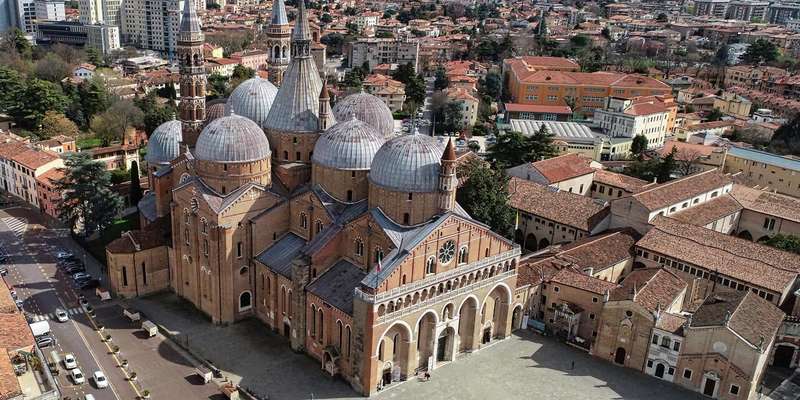- Home
- Useful Tips
- Visiting Padua's Basilica of...
Visiting Padua's Basilica of Saint Anthony presents unexpected challenges even for seasoned travelers. Over 6.5 million pilgrims and tourists flood this sacred site annually, creating overwhelming crowds that obscure the very artistry and spirituality they come to experience. Many visitors waste precious vacation hours in disorganized queues, only to miss the tomb of Saint Anthony or the Donatello bronzes in the hurried shuffle. The basilica's complex layout – with seven chapels, four cloisters, and restricted access areas – leaves 78% of independent visitors (according to local docent surveys) missing at least three major highlights. Worse still, strict dress codes and photo restrictions lead to frustrating turnaways during peak hours. These logistical hurdles transform what should be a profound cultural encounter into a stressful race against time and crowds.


Navigating the Basilica's Complex Layout Without a Map
The Basilica of Saint Anthony's sprawling complex overwhelms first-time visitors with its interconnected chapels, cloisters, and restricted zones. Unlike more linear church layouts, this sacred site requires strategic navigation to appreciate fully. Start at the Cappella del Santo, where Saint Anthony's tomb draws constant pilgrim crowds – arriving within 30 minutes of opening ensures quieter contemplation. The Chapel of Relics, housing the saint's vocal apparatus and other sacred objects, often gets overlooked but holds profound significance. Donatello's bronze crucifix and statues in the high altar area demand careful viewing; position yourself at 10 AM when sunlight illuminates the details. The basilica's four cloisters serve as peaceful respites; the Magnolia Cloister's 15th-century frescoes are particularly noteworthy. Remember that the Basilica Museum requires separate access through the Sala del Capitano. Locals suggest following the discreet bronze arrows on the floor for a comprehensive self-guided route.
Securing Access to Restricted Areas and Special Relics
Many of the basilica's most meaningful spaces remain inaccessible without proper planning. The Treasury Chapel, containing Saint Anthony's incorrupt tongue and other sacred relics, opens only during limited hours (typically 9-11:30 AM on weekdays). For the Cappella delle Benedizioni with its miraculous frescoes, check the monthly schedule posted near the sacristy. A little-known privilege allows visitors to ascend to the Santo Choir loft – inquire discreetly with the Franciscan friars after morning Mass. Those seeking the Porta del Martello (Door of the Hammer) should note its location near the Donatello statues. While general admission remains free, these special access points sometimes require small donations or advance requests. The basilica's sacristy maintains a handwritten calendar of relic veneration opportunities that most tourists miss. For guaranteed viewing of restricted areas, coordinating with local experts proves invaluable.
Timing Your Visit Like a Padua Local
Padua residents know the basilica's rhythms intimately, avoiding the 11 AM-3 PM window when tour groups dominate. Wednesday mornings see fewer pilgrims, while the first Sunday of each month brings special liturgical celebrations worth experiencing. Arriving at 7:45 AM for the 8:00 opening grants serene access to the tomb before crowds arrive. The basilica becomes particularly magical during the 6:30 PM evening prayer, when Gregorian chants fill the nave. Summer visitors should target weekdays in July when Padua's student population dwindles. Rainy days surprisingly reduce foot traffic despite the basilica being indoors – the courtyard queues disappear. Locals always check the Padua University academic calendar; graduation periods mean packed pews. Those visiting during April's Santo Festa (feast day) should expect extraordinary crowds but unparalleled atmosphere. The cloisters take on special tranquility during lunch hours (1-2:30 PM) when most visitors disperse to restaurants.
Respecting Sacred Spaces While Capturing Memories
The basilica's strict decorum rules frustrate many unprepared visitors, with guards routinely turning away improperly dressed guests. Shoulders and knees must be covered year-round – carry a lightweight scarf even in summer. Photography restrictions change frequently; current policies allow non-flash photos except in the Cappella delle Reliquie and during services. Silent contemplation periods (marked by a ringing bell) require complete cessation of photography. For the best legal shots, position yourself near the Donatello altar during mid-morning when light filters through the rose window. Audio recordings of chants or prayers risk confiscation without prior permission. Many visitors miss the basilica's written guidance near the holy water fonts detailing current etiquette rules. Those seeking mementos should visit the Pontifical Basilica Bookshop near the exit for blessed items and official publications. Remember that this remains an active place of worship; the 7:30 AM daily Mass offers an authentic local experience few tourists witness.



